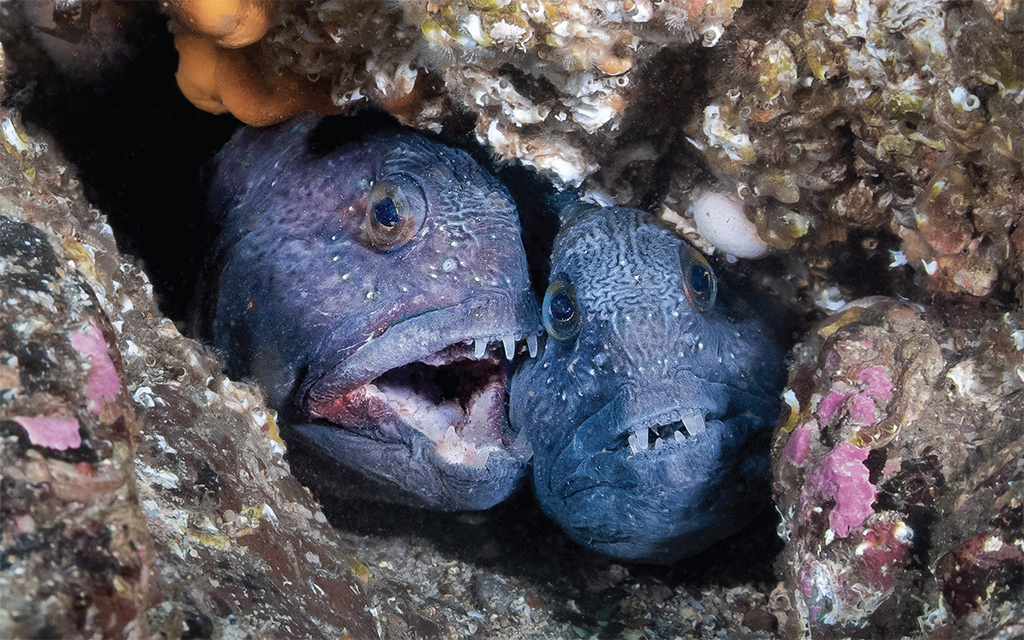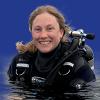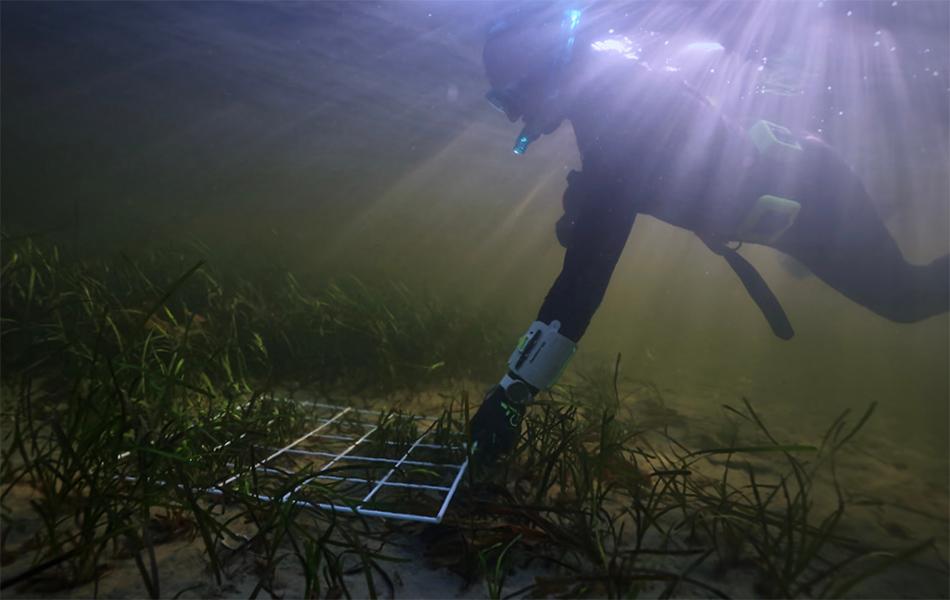
Kirsty Andrews celebrates the 40th anniversary of a voluntary marine reserve that continues to demonstrate the value of protecting the sea.
Wolffish: the UK’s biggest blenny. The elegantly arranged arms of a small but perfectly formed curled octopus. The infrequently spotted but beautiful featherstar shrimp. Fields of brittlestars as far as the eye can see, a sea of colourful arms reaching up for food, a writhing mass broken up only by the vibrant colours of occasional dahlia or chunky horseman anemones. Passing schools of coley or mackerel in large numbers overhead. Lobsters in healthy numbers patrolling the seabed, or, with other crustacean cousins, to be found under every boulder. So many and so varied nudibranchs to be found here that there is a festival for them in the Spring. If you’re lucky, dolphins or a minke whale spotted from the boat on the way out.
I could probably have stopped at wolffish and you’d have known where I was talking about, as the Berwickshire Marine Reserve (BMR) is the only UK diving spot where these appealingly ugly fish can reliably regularly be found by divers - they are cold-water species and St Abbs is towards the Southern end of their territory. In fact, this area of sea benefits from cold Arctic currents as well as warm Gulf Stream ones, which may go some way to explain the great abundance and diversity of life here.
Berwickshire remains to this day Scotland’s only voluntary marine reserve. Its aims are to conserve biodiversity, raise awareness and promote recreational use alongside sustainable fishery
I’m talking about the Marine Reserve today as it recently celebrated its 40th birthday - many happy returns, hearty congratulations from me; I’ll raise a glass in your honour. I’ll drink in particular to the foresighted souls who created the reserve back in 1984, including my friend, prolific author and famed Eyemouth resident Lawson Wood. He was joined by David Bellamy, who leapt into the sea from St Abbs Harbour in celebration in August 1984.
Berwickshire remains to this day Scotland’s only voluntary marine reserve. Its aims are to conserve biodiversity, raise awareness and promote recreational use alongside sustainable fishery. I applaud these goals, especially the idea of working together with local fisheries in an area where these have always integral to the community; driving through Eyemouth, you can’t miss the pictures of the Herring Queens over the decades, and the harbour is still full of working boats.
I also laud the BMR’s efforts to include others in appreciating the area’s richness. Its Marine Education Centre by the Eyemouth Harbour attracts and informs passing tourists, and there are a range of events throughout the year as well as ongoing marine monitoring. We divers get the best of it, seeing the delights of the reserve firsthand, but the BMR team have created snorkel trails and shore-based activities such as Shorewatch and an annual marine bioblitz, so there’s something for everyone.
Back to the diving though… the protected area extends across only an 8km stretch of coastline, from just North of St Abbs’ Head to Eyemouth. It reaches down to 50m depth, and this represents an area of 10.3 square km. This small but wonderful part of our country has a thriving dive scene; I reckon I’ve been on half a dozen different dive boats there over the years and haven’t tried all of them yet.
The Eyemouth set-up is excellent but the St Abbs skippers have the luxury of the smallest commute of all - five minutes or so to Black Carr, and not much further to the delightfully named Skelly Hole, a fantastic dive underneath raucous seabird colonies. That tiny commute in such a wonderful protected area must be why they’re such a cheerful bunch. Time to plan my next visit.
Article ‘Where protection is the priority’ by Kirsty Andrews first published in SCUBA magazine, Issue 150 November 2024.

 Author: Kirsty Andrews | Posted 13 Nov 2024
Author: Kirsty Andrews | Posted 13 Nov 2024



